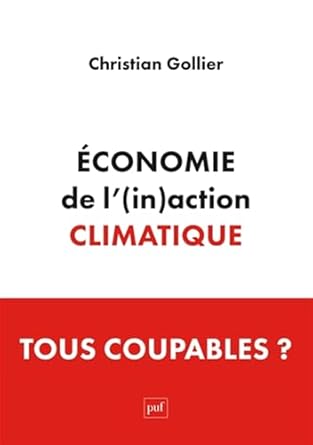Right from the start of the book, the introduction is striking, because based on successive failures on the climate front, the economist fears, at worst, a possible collapse of civilization and, at best, the possible replacement of our liberal democracy by an illiberal and therefore less democratic system because of climate inaction. Through his book, he therefore proposes the solution of introducing a carbon price (CO₂ tax) that could help save the common good in terms of nature in relation to climate change.
To do this, in the first part of the book, he shows that the problem of energy transition is a problem of allocating decarbonization efforts among a multitude of economic agents.
He highlights a large number of quantified calculations between, on the one hand, the CO² emissions emitted by traditional economic activity, and on the other hand, the actions to be carried out today and tomorrow by economic actors in order to move towards the net zero emissions (NZE) objective by 2050 (limiting global warming to 1.5°C).
Then, before tackling carbon taxation, he demonstrates the current contradictions of homo economicus, who wants to do something for the planet, but who in fact does not want to spend more for the same product/service; in other words, the social unacceptability of alternative climate policies.
On this subject, he therefore addresses the fact of the stowaway, because the economic actor who acts on decarbonization bears the full cost, and does not benefit in any way from the climatic benefit of this action (the costs are private, and the benefits are socialized).
In fact, he goes on to propose and explain his theory of introducing a single carbon tax (of the order of €250/T according to his calculations) equal to the carbon value. The principle being that everyone will make the effort to decarbonize if and only if its cost per ton of CO² avoided is lower than the carbon value. This assumes the establishment of a well-calibrated subsidy system, with this uniform carbon tax generating a social optimum.
But in an open world, while the new presidency of the United States is making every effort to deploy its economy with traditional energies, the effort required must take place at the global level and not the national level, hence the problem of the stowaway.
In addition, the author highlights an innovative idea proposing that the European Union set up an independent Carbon Central Bank (CCB) to manage the evolution of the price of carbon on an emission permit market covering the entire Union. Subsequently, the goal would be to raise the price of carbon to a level where oil and gas would no longer be competitive with renewable energies.
Finally, while there is no simple solution to the energy transition, and many intellectuals today fail to see the challenges posed by the debate surrounding climate policies that are undermining our liberal democracy, economist Grollier simply wanted to show that carbon pricing was the least bad solution.
This book helps us understand all the current economic issues we are facing without always realizing their full significance, as well as the major events that are shaping our century, such as electric cars, heat pump heating, soft mobility in cities, green steelmaking, e-fuels for aviation and maritime transport, etc. All that remains is to convince the global population…
Christian Gollier is an economist, co-founder and director of the Toulouse School of Economics and his work focuses on the climate economy (recent works: “Entre fin de mois et fin du monde” and “Le climat après la fin du mois”) and on the science of decision-making in uncertainty.
Claude GEORGELET


